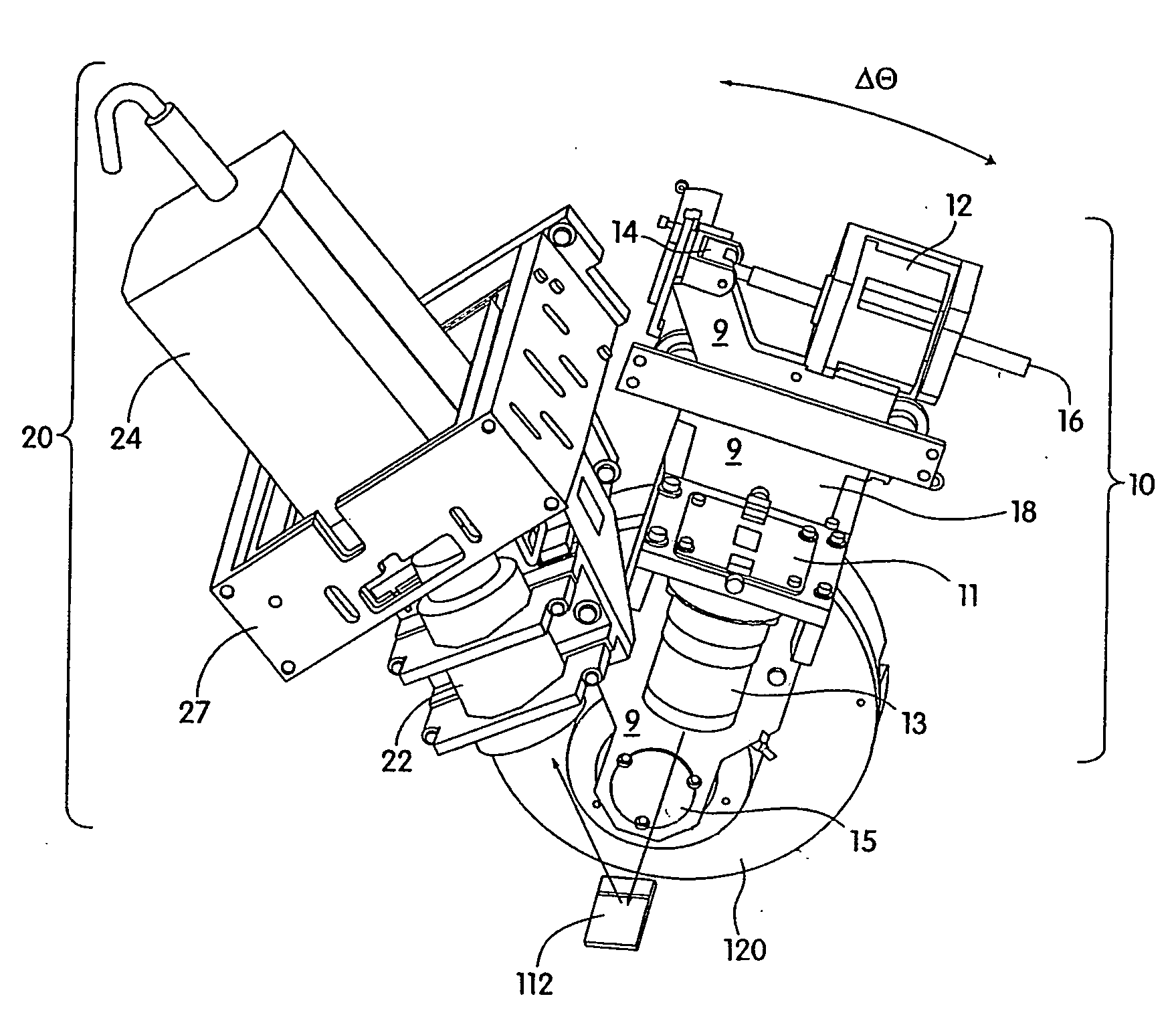Optical resonance analysis unit
- Summary
- Abstract
- Description
- Claims
- Application Information
AI Technical Summary
Benefits of technology
Problems solved by technology
Method used
Image
Examples
Embodiment Construction
[0052] The present invention is directed to an improved optical resonance analysis instrument for use especially in grating coupled surface plasmon resonance (GCSPR) capable of simultaneous measurement of an array of reaction sites. In particular, the present invention combines a number of features which, in addition to enabling real-time analysis of up to thousands of molecular binding interactions, also provides improvements in controlling reaction parameters involving system fluidics, temperature control, sensor scanning, and data collection and analysis from the scanned sensor.
[0053] The analysis unit may be fully automated and have all optical scanning operations controlled or implemented automatically by software included with the unit. Essentially, once the buffers, sample, and sensor are loaded into the unit, the user may enter the experimental parameters, e.g., time, temperature, fluid flow rate, etc., into a computer connected to the unit, and the unit can be programmed t...
PUM
 Login to View More
Login to View More Abstract
Description
Claims
Application Information
 Login to View More
Login to View More - R&D
- Intellectual Property
- Life Sciences
- Materials
- Tech Scout
- Unparalleled Data Quality
- Higher Quality Content
- 60% Fewer Hallucinations
Browse by: Latest US Patents, China's latest patents, Technical Efficacy Thesaurus, Application Domain, Technology Topic, Popular Technical Reports.
© 2025 PatSnap. All rights reserved.Legal|Privacy policy|Modern Slavery Act Transparency Statement|Sitemap|About US| Contact US: help@patsnap.com



